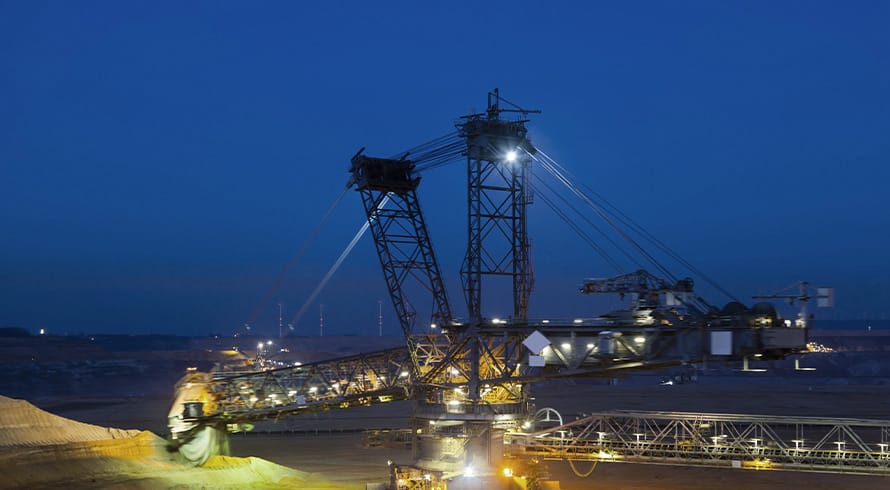Where to from here? Considerations following the 2023 MPRDA Review Summit regarding the objects of transformation policy
At a glance
- The Department of Mineral Resources and Energy, various dignitaries, heads of industry, trade unions and key stakeholders recently met to discuss the implementation of the Mineral and Petroleum Resources Development Act 28 of 2002 (MPRDA), and possible future amendments. One of the main discussion points centered around whether the transformation objectives set out in section 100(2) are being adequately met.
- In the matter of Minerals Council of South Africa vs Minister of Mineral Resources and Energy and 13 Others [2022] (1) SA 535 (GP), the High Court had to consider the extent of powers granted to the Minister of Mineral Resources and Energy (Minister) in terms of section 100(2) of the MPRDA to make law in the form of subordinate legislation, and the legal nature and role of the 2018 Mining Charter (Charter) in the context of the MPRDA.
- It is evident that the enactment of the Charter, as a policy document to support the Minister in his decision to grant mining rights, achieves the purpose and objectives of transformation set out in sections 2 and 100 of the MPRDA. Further, by virtue of the power that section 25(2)(d) confers on the Minister to include the requirements of the Charter in the terms and conditions of the mining right, the enforcement of the Charter's provisions can be achieved without amending legislation.
However, over the years the MPRDA has shown certain gaps and shortfalls, prompting industry players to express their grievances as to its effectiveness. The general sentiment is that certain provisions of the MPRDA remain vague, eliciting legal challenges, but there have also been concerns about the inconsistent application of the MPRDA as well as its misaligned interpretation in relation to other applicable legislation in the mining industry.
On 13 July 2023, the Department of Mineral Resources and Energy (DMRE) invited various dignitaries, heads of industry, trade unions and key stakeholders to address the 2023 MPRDA Review Summit on the lessons that have been learnt to date in the implementation of the MPRDA and to discuss possible amendments to be made.
One of the main discussion points centered around whether the transformation objectives set out in section 100(2) of the MPRDA are being adequately met and whether the applicability of the “once empowered, always empowered” principle should be revoked in furtherance of transformational objectives.
Transformation
In the matter of Minerals Council of South Africa vs Minister of Mineral Resources and Energy and 13 Others [2022] (1) SA 535 (GP), the Minerals Council of South Africa brought an application to the High Court to review and set aside certain provisions of the 2018 Mining Charter (Charter).
The overarching question the court had to consider was the extent of powers granted to the Minister of Mineral Resources and Energy (Minister) in terms of section 100(2) of the MPRDA to make law in the form of subordinate legislation, and the legal nature and role of the Charter in the context of the MPRDA.
Section 100(2) of the MPRDA provides as follows:
“(a) To ensure the attainment of the Government’s objectives of redressing historical, social and economic inequalities as stated in the Constitution, the Minister must within six months from the date on which this act takes effect develop a broad-based socio-economic empowerment charter that will set the framework for targets and time table for effecting the entry into and active participation of historically disadvantaged South Africans into the mining industry, and allow such South Africans to benefit from the exploitation of the mining and mineral resources and the beneficiation of such mineral resources.
(b) The charter must set out, amongst others how the objects in section 2 of the MPRDA can be achieved.”
The Minister and the DMRE were of the view that section 100(2) of the MPRDA empowers the Minister to make law through the development of the Charter, which would be legally binding on holders of mining rights. The converse was argued by the Minerals Council in that the Charter is a policy document only, providing direction to the Minister whenever he considers applications for a mining right.
The salient grounds on which the court concluded that section 100(2) of the MPRDA does not empower the Minister to make law through the Charter, were:
- A contextual or purposive interpretation must be adopted to give effect to the transformational objectives of the MPRDA. Further, that the formation of the Charter was not intended to be an instrument of subordinate legislation but rather to guide the Minister when granting an application for a mining right in terms of section 23(1)(h) of the MPRDA.
- The transformation objects are inherently achieved in terms of sections 2(d) and 100(2) of the MPRDA and reference to the Charter being binding law would undermine the enforcement structure of the MPRDA, as the granting of a mining right places an obligation on the holder to comply with the relevant provisions of the MPRDA and any other relevant laws and terms of the mining, namely the social and labour plan (SLP), sections 2(d) and (f) of the MPRDA and the Charter as contemplated in section 100(2).
- The MPRDA performs a balancing act between the objects of transformation and security of tenure for the holders of mining rights. The latter is central in achieving the transformation objects of the MPRDA. Failing security and transformation, a negative investment climate would be created in the mining industry, limiting equitable access and expansion of opportunities for historically disadvantaged persons.
- Having regard to the wording of the original charter in 2004, and subject to its iterations, the document was deemed to be a pact between the Government and industry, in which they committed themselves to a framework of progressing the empowerment of historically disadvantaged persons in the mining industry. Factors that had to be achieved in making licensing decisions could not be interpreted to require an ongoing commitment to achieve such factors indefinitely, which would be unduly onerous on mining right holders.
Conclusion
Given the above, one has to consider how the transformation objectives that are currently worded in the MPRDA and enforced by the Minister when granting applications for mining rights, would be amplified by closely aligning the MPRDA and the Charter as concurrent pieces of legislation and revoking the “once empowered, always empowered” principle.
It is evident that the enactment of the Charter, as a policy document to support the Minister in his decision to grant mining rights, achieves the purpose and objectives of transformation set out in sections 2 and 100 of the MPRDA. Further, by virtue of the power which section 25(2)(d) confers on the Minister to include the requirements of the Charter in the terms and conditions of the mining right, the enforcement of the Charter’s provisions can be achieved without amending legislation.
The court envisaged that should the Minister believe that the transformational objectives of the MPRDA are not being fulfilled through the process of incorporating those provisions in the mining right, then he retains the power to make regulations to that effect under section 107.
The MPRDA also imposes obligations on the holder to report its level of compliance for the subsistence of the mining right, failing which the Minister is entitled to suspend or cancel the mining right in terms of section 47 of the MPRDA.
Should the MPRDA and Charter both be deemed law there may be additional risks of dual and conflicting interpretations between the DMRE and mining right holders regarding the regulation of mining operations. Further, ensuring such checks and balances in respect to transformation compliance may inundate and create further capacity constraints within the DMRE.
In a world where access to investment funding is limited, the last thing South Africa needs currently is greater regulatory uncertainty in its already burdened mining industry
The information and material published on this website is provided for general purposes only and does not constitute legal advice. We make every effort to ensure that the content is updated regularly and to offer the most current and accurate information. Please consult one of our lawyers on any specific legal problem or matter. We accept no responsibility for any loss or damage, whether direct or consequential, which may arise from reliance on the information contained in these pages. Please refer to our full terms and conditions. Copyright © 2026 Cliffe Dekker Hofmeyr. All rights reserved. For permission to reproduce an article or publication, please contact us cliffedekkerhofmeyr@cdhlegal.com.
Subscribe
We support our clients’ strategic and operational needs by offering innovative, integrated and high quality thought leadership. To stay up to date on the latest legal developments that may potentially impact your business, subscribe to our alerts, seminar and webinar invitations.
Subscribe



